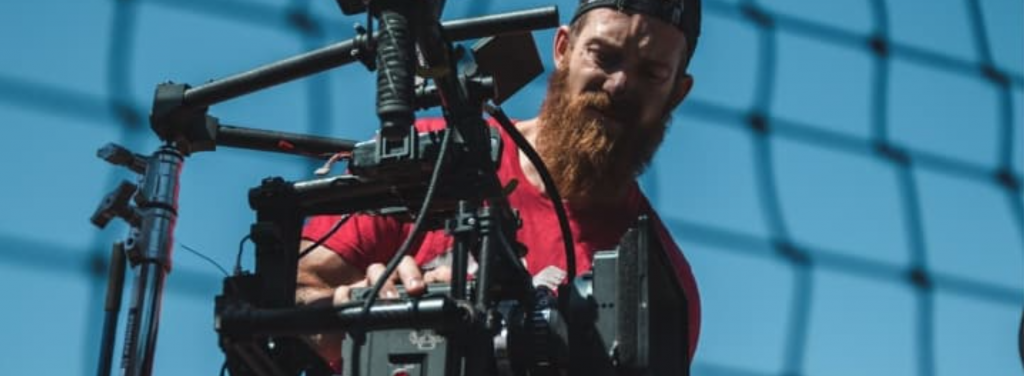Nothing helps prospective families identify and relate to your school more than a professional promotional video.
Video puts a human face to your school’s name and showcases your school’s values and unique offerings to prospective families. High quality video production is expensive, which is why most schools will only hire a production company for the most important videos. If your school is wanting to hire a production company for the first time, it’s hard to know where to start. As someone with a lot of experience working in that industry, I’ve put together a guide to help you achieve the best results when working with professional video production companies.
Want more tips and tricks from Isaac? Check out his interview:
Our Expert Content Creator Spills His Secrets For Creating Engaging Videos
1. Brainstorm your video concept
Before finding a production company, you first need to get clear on the purpose of the video. You don’t want to spend your precious time and marketing budget producing something that doesn’t actually solve the problem you want it to fix. So, start by developing your idea and defining what the video needs to achieve and you are making this video for (your target personas).
For example, your goal could be encouraging families in your local area to attend your next Open Day. To do this, you’ll want your video to really show off your school’s unique selling proposition, or USP: the one big thing makes your school different to the others in your area.
Source: Emmanuel College on YouTube
Once you’ve nailed down your video’s purpose and audience, it’s time to get creative. In this step, you’ll want to invite co-workers to participate in a brainstorming session if you can. Distribute everything you have written, and tell them that you need to collectively decide on the core message of the video. The key questions you’ll need to answer in your brainstorming are: ‘What do we want the audience to think?’ and ‘How do we want them to feel?’
To get you started, read our guide, Features of a Great School Video
In the session you can also research example videos, and discuss which elements your team likes about them, and which they don’t. You should come away from brainstorming with a really good understanding of what the video is about, your core message, your audience and ideas on how you want the video to look.
2. Write a video production brief
When you work with a production company, they will ask you to provide a brief that serves as a guide to ensure they understand what you want and to stop the video from going off-track. Your brief should include detail around:
- Your video’s purpose, target audience and core message
- Your school’s USP
- Your school’s brand guidelines, including your tone-of-voice document
- Any visual inspiration, such as a mood board
- Your production budget and deadline.
Source: Charlotte Latin School on YouTube
3. Compare your options
So you have a plan, you’ve got your brief and you want to make this happen. Have a look at your potential options, including video production companies, marketing agencies and freelancers around your area. You may want to reach out to colleagues, friends or other schools who have been through this process and ask for a recommendation.
A few questions you may want to ask when narrowing down include:
- Who is responsible for producing the storyboard?
- How many revisions are we allowed?
- Will we be charged for additional revisions (and how much)?
- Can you work within our deadline?
Once you’ve narrowed down your search, contact your favorites by sending through your brief and requesting a quote. If possible, have a meeting with the company before making your decision to discuss ideas and ensure you’re all on the same page.
For more information about hiring a production company, read our guide:
Selecting a Production Company for Your School Video
4. Storyboards and scripts
Generally the production company will create your storyboard. Storyboards can be very specific or basic: purely outlining the key shots of the project. When reviewing the storyboard, ask questions and give suggestions where you see fit. Make sure you keep in mind the video’s objective and core message. If you would like to try producing your own storyboard or want to visualize your ideas, try out Storyboarder. It’s a free and easy-to-use storyboarding program.
For any dialogue and voiceovers, you should work with the production company to write a script. Keep in mind the length of the video and keep it natural. You’ll need to send the script through to whoever will be speaking as soon as you can. It’s daunting being in front of the camera, so the more prepared they can be, the better.
It’s likely the company will ask to do a ‘recce’ (reconnaissance) beforehand. This is where the film crew will scout your school and take photos. This process helps the crew decide on shoot locations and fill out the storyboard.
Source: Stuartholme School on YouTube
5. Production
Now it’s time to pass the project into the capable hands of the production company to work their magic. It’s helpful to have a point of contact from your school there on the shooting day. They can help to assist the production company, and so you may want to have copies of shot lists and scripts available for them to reference. If you ask for any specific shots on the day, it’s a good idea leave the shot decisions (such as angle, or shot type) to the professionals.
6. Post Production
Depending on what you negotiate with the company, post production can be a long process. Make sure you leave time in your deadline for this as it usually takes between 3-6 weeks. Most companies will offer a certain amount of revisions before the final result, so do thorough checks after you receive the first draft. It’s important you ensure your message and videos objective is communicated effectively, and that your branding is maintained.
And that’s it! Have you engaged a production company to create a video for your school? How did it go?
If you’re looking for more resources on creating video, check out these posts:
Click here to read this article on Digistorm website.

![[PODCAST] Effective Event Marketing](https://www.schoolhouse.agency/wp-content/uploads/2021/08/PODCAST-Why-Marketers-Fear-Video.jpg)
![[Podcast] The Do’S And Don’Ts Of Video Marketing In 2020](https://www.schoolhouse.agency/wp-content/uploads/2021/08/PODCAST-The-Dos-And-Donts-Of-Video-Marketing-In-2020-1024x835.jpg)


